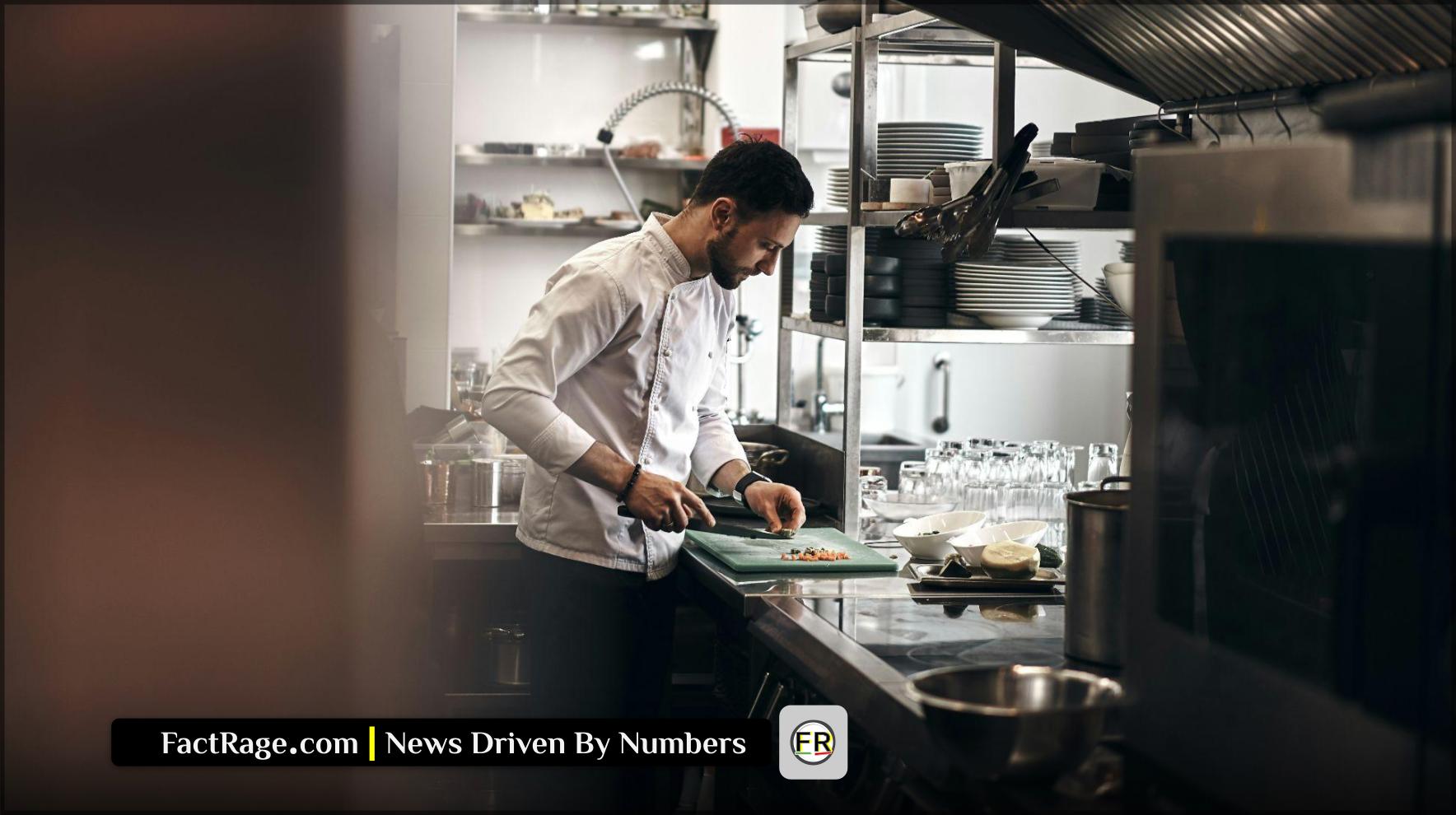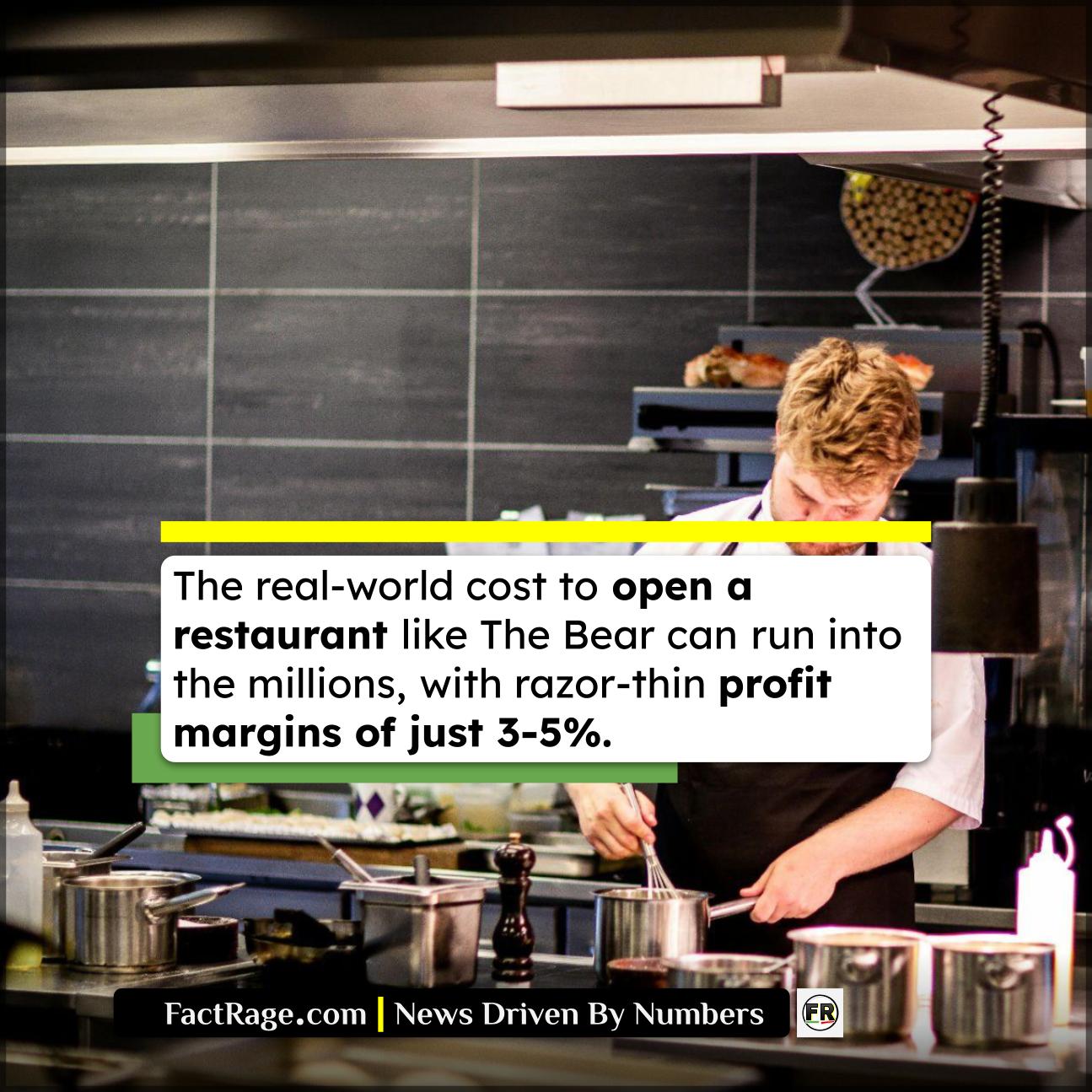CHICAGO, IL – As season four of FX’s “The Bear” premieres on Hulu, the drama inside its titular restaurant is less about what’s on the plate and more about the brutal numbers on the balance sheet. The relentless pursuit of a Michelin star by chef Carmen “Carmy” Berzatto is a compelling narrative, but a data-driven look at the fine-dining industry reveals his ambition may be a recipe for financial ruin.
- Cost of Entry – Opening a fine-dining restaurant can cost between $1.16 million and $5.75 million, with renovations alone running $150-$300 per square foot.
- Profitability Pressure – The average net profit margin for a fine-dining establishment is a razor-thin 3% to 5%, significantly lower than other restaurant models.
- The Michelin Paradox – While gaining a Michelin star can increase a restaurant’s revenue and prestige, the high costs required to achieve and maintain that status can negate the financial benefits.
The show, a critical success for Hulu, which is majority-owned by The Walt Disney Company, grounds its kitchen chaos in a very real financial struggle. But how accurate is this portrayal? An analysis of the real-world costs and razor-thin margins of the industry shows the series isn’t just drama; it’s a documentary on the precarious economics of high-end cuisine.
The Six-Figure Reality of a Restaurant Transformation

The central conflict of “The Bear” began with a transformation from a neighborhood sandwich shop to a fine-dining destination. In the real world, such a pivot requires staggering levels of capital.
A complete renovation and build-out of a fine-dining restaurant is a monumental expense. Industry estimates place the total startup cost between $1.16 million and $5.75 million. The renovation itself can cost $150 to $300 per square foot, meaning a modest 2,000-square-foot space could command a $600,000 construction budget before a single plate is purchased. High-end kitchen equipment adds another $150,000 to $500,000, while furniture, tableware, and initial staffing can easily push the total far higher. Cicero’s $300,000 loan to the Berzatto brothers, which forms a key plot point, would barely cover the down payment on this culinary dream.
Why a 5% Profit Margin is Considered a Success
Even if a restaurant can secure the initial funding, the day-to-day business model is fraught with financial peril. The fine-dining sector operates on some of the tightest margins in the service industry.
Net profit margins for these establishments typically hover between a slim 3% and 5%. For a restaurant generating $1 million in annual revenue, that translates to just $30,000 to $50,000 in actual profit. This is a stark contrast to quick-service restaurants, which can see margins of 6% to 9%.
Where does the money go? The two biggest expenditures are labor and the cost of goods sold (COGS). Labor, including a Head Chef (average Chicago salary: $90,100), a Sous Chef ($57,655), and a Manager ($61,939), can consume 30-40% of all revenue. Food costs, driven by the high-quality ingredients necessary for elite menus, eat up another 28-35%. After accounting for rent, utilities, and marketing, very little is left for ownership, making the business exceptionally vulnerable to any disruption.
The Financial Weight of a Single Review
The show’s Season 3 cliffhanger, a pending review from the Chicago Tribune, highlights one of these major potential disruptions. A single critic’s assessment can have a quantifiable impact on a restaurant’s viability.
Data shows that a mere one-star increase in an online rating can boost revenue by 5% to 9%. With over 90% of diners researching a restaurant online before visiting, positive reviews are a critical driver of traffic. Consumers report being willing to spend over 30% more at a business with excellent reviews. For a restaurant like The Bear, operating on a financial knife’s edge, a glowing review could provide the cash flow needed to survive. Conversely, a negative review can be devastating; some studies show a single bad online review can cost a business an average of 30 customers.
The Michelin Star: A High-Risk Investment Strategy
Carmy’s ultimate goal is a Michelin star, the industry’s highest honor. While achieving this can feel like hitting the “culinary jackpot,” it is best understood as a high-risk, high-reward investment.
Gaining a star allows restaurants to command higher prices and attracts a global clientele. Research indicates that, in general, Michelin-starred restaurants are more profitable than their non-starred counterparts, with profitability increasing with each additional star.
However, this potential return comes with immense upfront costs. Many chefs invest heavily to upgrade their service, ingredients, and decor in anticipation of a Michelin inspection, driving up expenses long before any potential revenue increase. The pressure to maintain the star—and the costs associated with it—is immense. For a business already struggling with debt and thin margins, chasing this prestigious award is a significant gamble. It’s a strategy that can solidify a restaurant’s legacy or accelerate its financial collapse.









